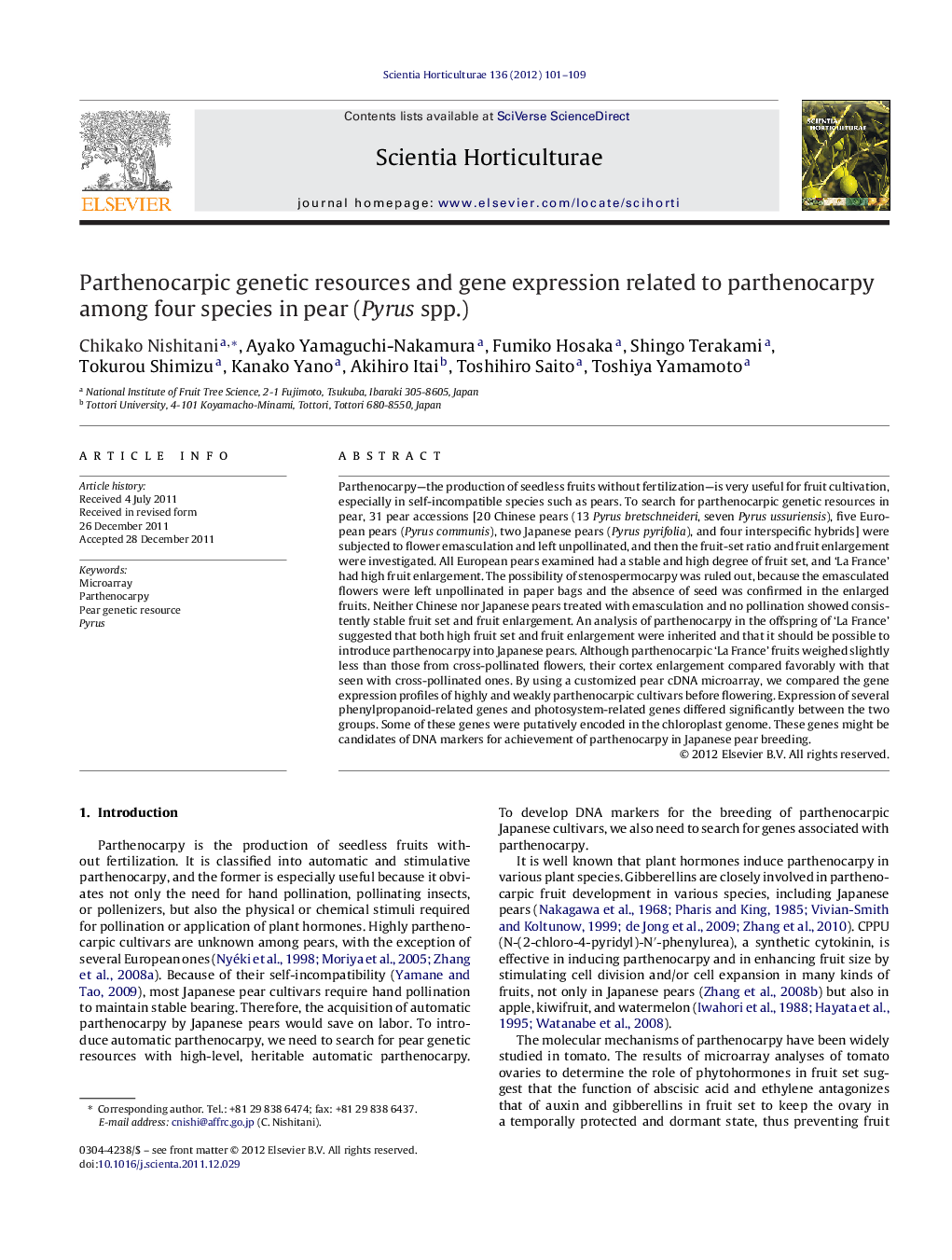| کد مقاله | کد نشریه | سال انتشار | مقاله انگلیسی | نسخه تمام متن |
|---|---|---|---|---|
| 4567864 | 1628862 | 2012 | 9 صفحه PDF | دانلود رایگان |

Parthenocarpy—the production of seedless fruits without fertilization—is very useful for fruit cultivation, especially in self-incompatible species such as pears. To search for parthenocarpic genetic resources in pear, 31 pear accessions [20 Chinese pears (13 Pyrus bretschneideri, seven Pyrus ussuriensis), five European pears (Pyrus communis), two Japanese pears (Pyrus pyrifolia), and four interspecific hybrids] were subjected to flower emasculation and left unpollinated, and then the fruit-set ratio and fruit enlargement were investigated. All European pears examined had a stable and high degree of fruit set, and ‘La France’ had high fruit enlargement. The possibility of stenospermocarpy was ruled out, because the emasculated flowers were left unpollinated in paper bags and the absence of seed was confirmed in the enlarged fruits. Neither Chinese nor Japanese pears treated with emasculation and no pollination showed consistently stable fruit set and fruit enlargement. An analysis of parthenocarpy in the offspring of ‘La France’ suggested that both high fruit set and fruit enlargement were inherited and that it should be possible to introduce parthenocarpy into Japanese pears. Although parthenocarpic ‘La France’ fruits weighed slightly less than those from cross-pollinated flowers, their cortex enlargement compared favorably with that seen with cross-pollinated ones. By using a customized pear cDNA microarray, we compared the gene expression profiles of highly and weakly parthenocarpic cultivars before flowering. Expression of several phenylpropanoid-related genes and photosystem-related genes differed significantly between the two groups. Some of these genes were putatively encoded in the chloroplast genome. These genes might be candidates of DNA markers for achievement of parthenocarpy in Japanese pear breeding.
► Parthenocarpy is a very important characteristic for pear cultivation with stable fruit set.
► We found that European pear ‘La France’ had especially stable and high levels of automatic parthenocarpy.
► Parthenocarpy was partially inherited by the offspring of ‘La France’.
► Microarray analysis showed that the phenylpropanoid and photosystem pathways were associated with parthenocarpy.
Journal: Scientia Horticulturae - Volume 136, 1 March 2012, Pages 101–109